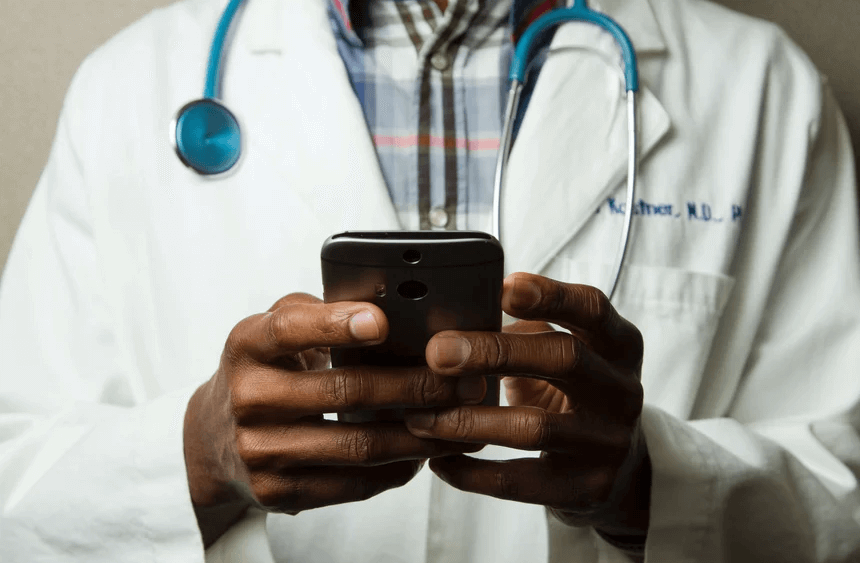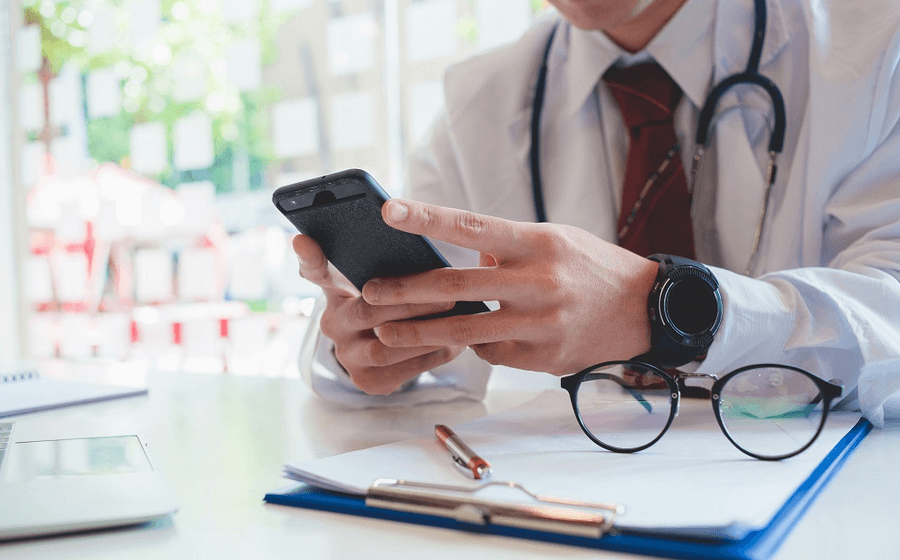📑 Table of Contents
Healthcare organizations constantly juggle responsibilities, from managing patient care to administrative tasks. With growing demands and time-sensitive processes, productivity becomes a top priority. Healthcare providers are searching for ways to streamline communication, reduce no-shows, improve patient engagement, and maximize operational efficiency.
One tool that has become indispensable in this quest for productivity is SMS (Short Message Service). SMS offers a direct, fast, and convenient way to connect with patients, staff, and external partners, making it essential to healthcare communication strategies. Whether automating reminders, improving staff coordination, or sending medication updates, SMS empowers healthcare organizations to increase efficiency without compromising the quality of care.
This blog will explore the top 5 ways healthcare organizations use SMS to increase productivity and improve patient satisfaction.
1. Automating Appointment Reminders
Missed appointments are a significant challenge in the healthcare industry. Each no-show represents a missed opportunity to provide care, a schedule gap, and a revenue loss. Studies show that the average no-show rate for medical appointments ranges between 10% and 30%, depending on the practice type. Addressing this issue is critical for improving productivity, and SMS plays a key role in minimizing these missed appointments.
By using SMS for appointment reminders, healthcare organizations can significantly reduce the likelihood of patients forgetting their scheduled visits. Instead of relying solely on phone calls or emails, which may go unnoticed, SMS messages are far more immediate. Most people check their text messages within minutes of receiving them, making SMS an effective way to ensure timely reminders.
For instance, clinics can send automated reminders 24 to 48 hours before an appointment, giving patients ample time to confirm or reschedule. Additionally, including an interactive feature—such as replying “YES” to confirm or “NO” to cancel—provides immediate feedback to the clinic. This allows staff to fill any canceled appointments quickly, reducing wasted time and increasing clinic efficiency.
Moreover, SMS appointment reminders can include additional information, such as instructions for pre-appointment preparations or parking details, making the patient’s experience smoother. This reduces no-shows and enhances overall patient satisfaction, as they feel well-prepared for their visits.
2. Streamlining Staff Communication
Efficient staff communication is essential for smooth operations in healthcare settings, where timely information exchange can significantly affect patient outcomes. Traditional methods such as phone calls, emails, or paging systems are often inefficient, especially during busy periods when response times are critical. SMS offers a faster, more reliable solution to streamline internal communications among healthcare teams.
For example, hospitals and clinics can use SMS to notify staff about schedule changes, shift updates, or urgent cases that require immediate attention. If a nurse is needed in another department, a quick SMS can get the message across faster than an email or voicemail. This helps reduce delays, improves coordination, and ensures patient care continues without interruption.
Additionally, group messaging via SMS allows administrators to broadcast important announcements to multiple team members simultaneously. Whether it’s a hospital-wide alert or a message specific to one department, everyone stays informed in real-time. This level of communication boosts productivity and helps avoid any potential communication gaps that could affect patient care.
Moreover, SMS can be used for non-urgent updates, such as training reminders, policy changes, or new procedure notifications. Staff can quickly access these updates without checking multiple platforms, enhancing efficiency.
3. Improving Medication Adherence

Adhering to a prescribed medication schedule is crucial for patients’ recovery and long-term health outcomes. However, many patients struggle with remembering to take their medications or fail to refill prescriptions on time, leading to complications and potentially avoidable hospital visits. SMS offers a simple yet effective solution to improve medication adherence.
Through automated SMS reminders, healthcare providers can send patients timely notifications to take their medications as prescribed. These reminders can be personalized based on the patient’s treatment plan, ensuring they receive the right message at the right time. For instance, an SMS might remind patients to take their heart medication every morning or alert them to upcoming prescription refill deadlines.
Sometimes, healthcare organizations use SMS to send follow-up messages, asking patients whether they’ve taken their medication. Patients can respond with a simple “YES” or “NO,” allowing providers to track adherence remotely. If a patient misses several doses, a care coordinator can intervene before the situation worsens.
This proactive approach to medication management improves patient outcomes by reducing complications and hospital readmissions. By helping patients stay on track with their treatment plans, healthcare organizations can focus their resources on proactive care rather than responding to avoidable emergencies. This, in turn, enhances productivity, as less time is spent on reactive care measures.
4. Enhancing Patient Engagement with Follow-Ups
Patient engagement is essential for successful healthcare outcomes, especially after treatments, surgeries, or consultations. However, manual follow-up processes can be labor-intensive and take valuable staff time. SMS can help healthcare organizations automate follow-ups, making it easier to stay connected with patients without overloading the care team.
For instance, after a surgical procedure, an automated SMS can be sent to the patient asking how they’re feeling, experiencing any unusual symptoms, or having questions about post-op care. These follow-up messages can include links to resources, such as wound care instructions or medication guidelines, to ensure patients have all the information they need to recover safely.
This automation significantly reduces the need for follow-up phone calls, allowing healthcare providers to focus on patients who require more hands-on attention. SMS follow-ups also encourage patients to stay engaged with their treatment plans and notify their healthcare team if any issues arise. This proactive approach ensures that potential problems are addressed early, reducing the risk of complications that could lead to readmissions.
Furthermore, SMS follow-ups allow one to schedule post-treatment appointments or send reminders for upcoming lab work or tests. By automating these processes, healthcare organizations save time and ensure patients stay on track with their care plans.
5. Facilitating Surveys and Feedback Collection
Collecting feedback is vital for healthcare organizations to measure patient satisfaction, identify areas for improvement, and continuously enhance the quality of care. However, traditional methods of collecting feedback—such as paper surveys or phone interviews—can be cumbersome and time-consuming, often resulting in low response rates. SMS provides a more efficient and user-friendly way to gather real-time patient feedback.
After a patient’s visit or treatment, healthcare providers can send a quick SMS survey about their experience. These surveys are short, easy to complete, and accessible directly from the patient’s phone. Because SMS surveys are so convenient, patients are more likely to participate, giving healthcare organizations valuable insights into their services.
For example, a clinic might ask patients to rate their visit on a scale of 1 to 5 or simply comment on what could have been improved. This automatic feedback allows healthcare providers to make data-driven decisions on improving operations, from reducing wait times to enhancing bedside manners.
Collecting real-time feedback improves the patient experience and enables healthcare organizations to address issues more quickly. If a patient expresses dissatisfaction with a particular aspect of their care, the organization can promptly resolve the problem, preventing negative reviews or patient attrition.
SMS Compliance and Data Security in Healthcare
1. HIPAA Compliance
- Secure Transmission: Ensure PHI in SMS is encrypted and protected from unauthorized access.
- Limit Information: Send alerts, not detailed medical info, to maintain compliance.
- Audit Trail: Track and log all SMS communications involving patient data for accountability.
2. Encryption and Secure Messaging
- End-to-End Encryption: Use platforms that encrypt SMS from sender to recipient to prevent data breaches.
- HIPAA-Compliant Platforms: Choose SMS services designed to meet healthcare security standards with encryption and access controls.
3. Patient Consent
- Written Consent: Obtain patient consent to send SMS messages before starting communication.
- Opt-Out Options: Provide easy ways for patients to unsubscribe from SMS notifications.
- Inform Patients of Risks: Clearly explain the risks of using SMS for health-related information.

Final Reflection
In today’s fast-paced healthcare environment, improving productivity is critical for delivering high-quality care while managing resources efficiently. SMS is a powerful tool that helps healthcare organizations streamline communication, automate workflows, and enhance patient engagement. SMS enables healthcare providers to optimize operations and provide better patient care, from reducing no-shows with appointment reminders to improving medication adherence and collecting feedback.
By integrating SMS into their communication strategies, healthcare organizations can save time, reduce operational inefficiencies, and ensure a seamless patient and staff experience. As technology evolves, SMS will remain a key asset in helping healthcare providers improve productivity and deliver the highest standard of care.
Start implementing SMS in your healthcare organization today and experience the difference it can make in boosting productivity and enhancing patient outcomes.
